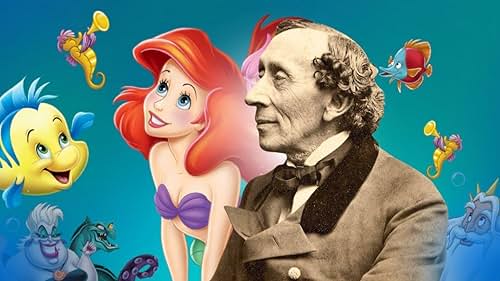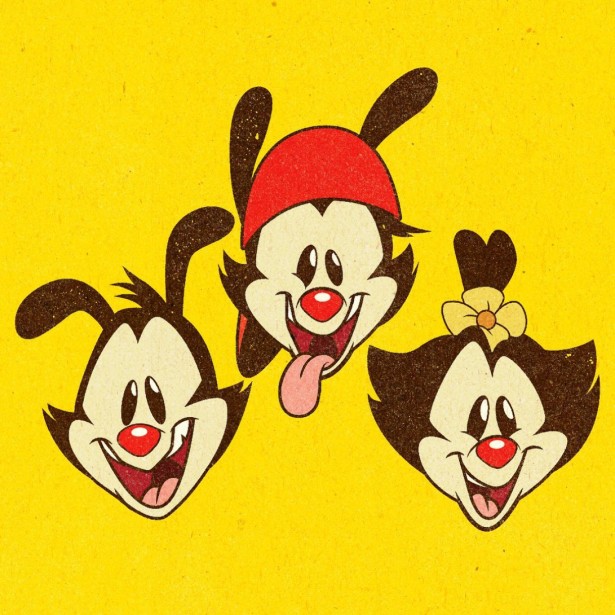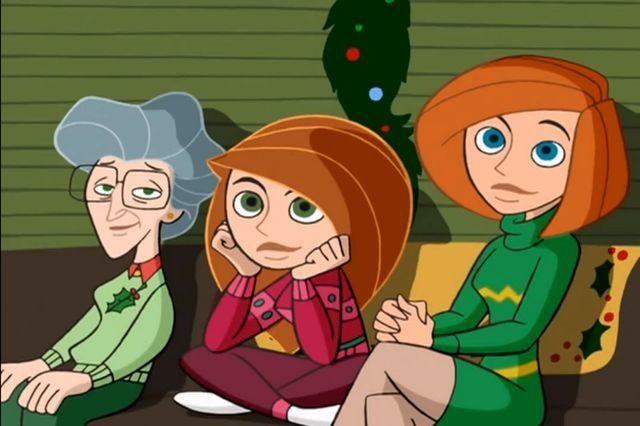Table of Contents
- “The Simpsons”: The Dysfunctional Family Next Door
- Social Commentary
- Iconic Characters
- Longevity and Influence
- “Animaniacs”: Zany Sibling Shenanigans
- Educational Entertainment
- Cultural Parodies
- Memorable Music
- “Pokémon”: Catch ‘Em All Phenomenon
- Fostering Friendship
- Collectible Craze
- Enduring Legacy
- “Powerpuff Girls”: Empowering Heroines
- Empowerment Through Diversity
- Villains and Values
- Lasting Impact
The 1990s were a remarkable era for animation, giving birth to a wave of beloved cartoons that would leave an indelible mark on a generation. These shows weren’t just Saturday morning entertainment; they were cultural phenomena that influenced the way we laughed, learned and grew. In this article, we’ll take a nostalgic journey through the world of 90’s animation classics and explore how they shaped the childhoods of millions.
The 1990s stand as a golden era in the realm of animation, offering a treasure trove of timeless classics that continue to hold a special place in the hearts of those who grew up with them. These weren’t just cartoons; they were enchanting adventures that left an indelible mark on an entire generation. Let’s embark on a nostalgic journey through the enchanting world of 90’s animation, where imagination knew no bounds and life lessons were cleverly tucked between the frames.
1. A Kaleidoscope of Creativity: The 90s ushered in a burst of creativity in animation, with studios producing an array of shows spanning various genres. From the zany escapades of “Animaniacs” to the epic space odyssey of “Sailor Moon,” and from the heartwarming life lessons in “Arthur” to the surreal humor of “Rocko’s Modern Life,” there was something for everyone. The diversity of content fueled young minds and encouraged exploration.
2. Life Lessons Disguised as Fun: These cartoons were more than just colorful escapades; they were vessels of wisdom. Shows like “Captain Planet” instilled environmental consciousness, “Rugrats” taught the value of imagination and friendship and “DuckTales” was a lesson in adventurous spirit and entrepreneurship. Children unknowingly absorbed these life lessons while having a blast.
3. Memorable Characters: The 90s introduced us to a plethora of unforgettable characters. Who could forget the mischievous Bart Simpson, the brave and resourceful Kim Possible or the quirky and ever-curious Dexter? These characters became companions in our living rooms, offering laughter, inspiration and a sense of camaraderie.
4. Catchy Theme Songs: The theme songs of 90’s cartoons are etched in our memories, ready to be hummed at a moment’s notice. From the funky beats of “The Fresh Prince of Bel-Air” to the empowering anthem of “Mighty Morphin Power Rangers,” these tunes had a way of getting stuck in our heads, becoming part of our childhood soundtrack.
5. Cultural Impact: 90’s animation didn’t just entertain; it had a profound cultural impact. It introduced diversity with shows like “Gargoyles,” which featured strong, multi-dimensional characters from various backgrounds. These shows encouraged inclusivity and broadened horizons.
6. Imagination Unleashed: Animation in the 90s was a playground for imagination. Shows like “Pokemon” and “Digimon” ignited a passion for exploration and adventure. Young viewers were transported to fantastical worlds, igniting a sense of wonder that continues to inspire creativity.
7. Lasting Connections: The shared experience of growing up with these cartoons created lasting connections among peers. Discussing the latest episodes and trading collectibles like Pokemon cards or Pogs became a common bonding activity. These shared moments forged friendships that lasted long after the shows had ended.
8. A Legacy of Nostalgia: Even today, 90’s animation holds a special place in the hearts of those who grew up with it. Nostalgia for these shows has led to reboots, revivals and a renewed appreciation for the magic they brought into our lives.
9. Timeless Appeal: What makes 90’s animation truly remarkable is its timeless appeal. While many of these shows were designed for children, their humor, themes and storytelling continue to resonate with audiences of all ages. They serve as a bridge between generations, inviting parents to share the magic with their children.
In essence, the 1990s animation classics weren’t just cartoons; they were catalysts of imagination, wisdom and friendship. They continue to shape the childhoods and memories of millions, reminding us that the magic of animation knows no age limit. As we revisit these cherished classics, we not only relive the past but also celebrate the enduring legacy of creativity and storytelling that defined a remarkable era.
For additional details, consider exploring the related content available here Top 35 Most Nostalgic TV Cartoons Of My Childhood – Rate Your …
“The Simpsons”: The Dysfunctional Family Next Door
“The Simpsons” is an animation classic that redefined prime-time television. Created by Matt Groening, this satirical sitcom introduced us to the Simpson family—Homer, Marge, Bart, Lisa and Maggie—in the fictional town of Springfield. What set “The Simpsons” apart was its ability to tackle real-world issues with humor.
“The Simpsons” is more than just an animation classic; it’s a cultural institution that forever altered the landscape of prime-time television. Created by the visionary mind of Matt Groening, this satirical sitcom introduced us to the colorful and iconic Simpson family—Homer, Marge, Bart, Lisa and Maggie—residing in the fictional and perpetually chaotic town of Springfield. What set “The Simpsons” apart from its contemporaries was its remarkable ability to tackle real-world issues with sharp wit, humor and an irreverent spirit.
At its heart, “The Simpsons” was a reflection of the ordinary American family grappling with everyday challenges, quirks and absurdities. Homer, the lovable but bumbling patriarch, represented the flawed yet endearing nature of many fathers. Marge, the loving and patient mother, was the glue that held the family together. Bart, the troublemaker with a heart of gold, was a symbol of rebellion and youthful curiosity. Lisa, the intellectual and socially conscious middle child, often served as the moral compass of the family. And baby Maggie, despite her silence, added her own charm and surprises to the mix.
What made “The Simpsons” truly remarkable was its willingness to take on serious societal issues through satire and humor. It fearlessly lampooned politics, religion, corporate greed and pop culture, often pushing the boundaries of what was considered acceptable in prime-time television. Whether it was addressing environmental concerns through Mr. Burns’s callousness or critiquing the media’s influence on society through the antics of Kent Brockman, the show used its irreverent lens to shine a spotlight on the absurdities of the modern world.
The show’s social commentary often took on a timeless quality, making it relevant to multiple generations. It invited viewers to question the status quo and encouraged them to engage critically with the world around them. “The Simpsons” showed that humor could be a powerful tool for sparking conversations about complex and sometimes uncomfortable subjects.
Over the years, “The Simpsons” evolved into a beloved cultural touchstone, garnering a dedicated fan base and critical acclaim. It celebrated diversity, challenged stereotypes and offered a vibrant tapestry of characters who mirrored the rich tapestry of American society.
In essence, “The Simpsons” was more than just an animated sitcom; it was a mirror reflecting the joys, absurdities and complexities of modern life. Its legacy endures as a testament to the enduring power of humor and satire to entertain, enlighten and provoke thought in equal measure.
For a comprehensive look at this subject, we invite you to read more on this dedicated page: Top 100 Animated Series – IGN.com

Social Commentary
The show’s wit and irreverence allowed it to address social, political and cultural topics head-on. It challenged norms, raised awareness and encouraged viewers to think critically about the world around them.
The show’s wit and irreverence were its secret weapons, enabling it to be a fearless commentator on the pressing social, political and cultural topics of its time. “The show” not only entertained but also provoked thought and discussion, earning its place as a cultural touchstone.
With its clever humor and unapologetic approach, the show fearlessly addressed social issues that many sitcoms of its era shied away from. It used humor as a Trojan horse, delivering powerful messages to its audience while making them laugh. Whether it was addressing gender equality, racial injustice or environmental concerns, the show was unafraid to take a stand and challenge the status quo.
In the realm of politics, the show was no less audacious. It provided biting satire and commentary on political figures and events, using exaggerated characters and absurd situations to shed light on real-world absurdities. This approach allowed viewers to engage with political themes without feeling overwhelmed, ultimately encouraging them to think critically about the world they lived in.
Culturally, the show was a trailblazer. It didn’t just reflect the times; it actively shaped and influenced them. Through its memorable catchphrases, iconic characters and thought-provoking storylines, it became a part of the cultural lexicon. It challenged societal norms and pushed boundaries, sparking conversations that extended far beyond the television screen.
The show’s irreverence was a breath of fresh air, reminding viewers that it’s okay to question authority and challenge the status quo. It encouraged a healthy skepticism and a willingness to engage with difficult topics. In doing so, it empowered its audience to become more informed, engaged citizens who were unafraid to speak out and make a difference in their communities.
In retrospect, the show’s legacy is not just one of entertainment but of education and empowerment. It stands as a testament to the power of media to shape hearts and minds, to challenge preconceived notions and to inspire change. It reminds us that humor can be a potent force for social progress and irreverence can be a tool for dismantling injustice.
As we look back on the show’s wit and irreverence, we see more than just a television program; we see a cultural force that encouraged us to be more thoughtful, engaged and fearless in our pursuit of a better world. It challenged us to think critically about the world around us and inspired us to take action. In that sense, it continues to be a guiding light for those who seek to make a difference and challenge the norms that hold us back.
Should you desire more in-depth information, it’s available for your perusal on this page: Did Disney shape how you see the world? – BBC Worklife

Iconic Characters
Springfield was populated with an array of colorful characters, from the bumbling Homer to the idealistic Lisa and the mischievous Bart. These characters became cultural icons and their catchphrases entered the lexicon of everyday conversation.
Springfield, the fictional town in “The Simpsons,” was a vibrant and eclectic community, thanks to its memorable cast of characters. From the lovable but bumbling Homer to the idealistic and intelligent Lisa and the mischievous troublemaker Bart, each character added their unique flavor to the show’s dynamic. Together, they created a tapestry of personalities that resonated with audiences across generations.
Homer Simpson, the patriarch of the family, embodied the all-too-human flaws of laziness, gluttony and a penchant for foolish antics. Yet, beneath his comically exaggerated flaws lay a character who was relatable to many, showcasing the struggles and absurdities of everyday life. His exclamation of “D’oh!” in moments of frustration became a universal expression of exasperation, making its way into everyday conversations worldwide.
On the other end of the spectrum, Lisa Simpson, the precocious and socially conscious daughter, served as a beacon of intellect and idealism. Her character offered a refreshing counterbalance to the zany antics of the town, championing social causes and intellectual pursuits. Lisa’s thoughtful perspectives on various issues sparked contemplation and dialogue, demonstrating that even within the chaos of Springfield, wisdom and compassion could thrive.
Then there was Bart Simpson, the quintessential rebellious youth who embodied the spirit of non-conformity and mischief. His catchphrase, “Eat my shorts!” and his misadventures struck a chord with teenagers and served as a symbol of youthful defiance.
These characters and their iconic catchphrases didn’t just entertain; they embedded themselves in the cultural zeitgeist. Lines like “D’oh!” and “Don’t have a cow, man!” became part of everyday conversation, instantly recognizable to fans and even those who had never watched the show. “The Simpsons” had a knack for distilling complex emotions and situations into memorable one-liners, making it a show that could be quoted and referenced in countless social interactions.
The enduring appeal of “The Simpsons” lies not only in its humor but also in its ability to reflect the human condition. Through its characters and catchphrases, the show provided a lens through which we could laugh at ourselves, our society and the absurdities of modern life. In doing so, it became more than just a cartoon; it became a cultural touchstone, a mirror to our collective experiences and a testament to the enduring power of storytelling in popular culture.
Don’t stop here; you can continue your exploration by following this link for more details: 32 Best Cartoon Network Shows Of All Time

Longevity and Influence
“The Simpsons” holds the record for the longest-running American sitcom. Its longevity is a testament to its enduring appeal and cultural significance.
“The Simpsons” stands as an iconic television series, not just for its record-breaking longevity but also for its remarkable influence on popular culture. Its status as the longest-running American sitcom is a testament to its enduring appeal and this appeal goes far beyond its ability to entertain.
One of the key factors contributing to the show’s continued success is its sharp social satire and keen commentary on contemporary issues. “The Simpsons” has never shied away from poking fun at politics, religion, consumerism and societal norms. Its ability to use humor to address these topics has made it a mirror reflecting the absurdities and complexities of modern life. This fearless approach has earned the show a dedicated fan base and critical acclaim, making it a relevant source of commentary on current events and societal trends.
Moreover, “The Simpsons” boasts a cast of beloved and iconic characters, each with their distinct quirks and personalities. The Simpson family itself has become a symbol of American television, with characters like Homer, Marge, Bart, Lisa and Maggie resonating with viewers of all ages. These characters have transcended the confines of the show, becoming cultural touchstones that people can relate to and find comfort in.
The series has also been praised for its ability to evolve with the times while maintaining its core essence. It has addressed issues like technology, environmentalism and changing family dynamics, ensuring that it remains relevant to new generations of viewers. This adaptability has helped “The Simpsons” remain a vibrant part of the television landscape for decades.
Additionally, the show’s impact extends beyond the screen. It has inspired a vast array of merchandise, theme park attractions and even academic studies. Its catchphrases, references and memorable moments have permeated popular culture, demonstrating its profound influence on society.
In conclusion, “The Simpsons” isn’t just a record holder for longevity; it’s a cultural institution. Its enduring appeal, ability to tackle important issues with humor and its cast of beloved characters have made it a beloved and influential part of television history. As it continues to explore new themes and adapt to changing times, “The Simpsons” will likely remain a vital source of entertainment and social commentary for years to come.
For additional details, consider exploring the related content available here Pokémon will outlive us all – Vox

“Animaniacs”: Zany Sibling Shenanigans
“Animaniacs” was a riotous animated variety show created by Steven Spielberg. It featured a trio of zany siblings—Yakko, Wakko and Dot Warner—who escaped from the Warner Bros. Water Tower and embarked on madcap adventures.
“Animaniacs,” the brainchild of the legendary Steven Spielberg, was a whirlwind of animated hilarity that left an indelible mark on both children and adults alike. At its whimsical core were the irrepressible Warner siblings—Yakko, Wakko and Dot Warner—whose escapades from the Warner Bros. Water Tower became a delightful mainstay in the world of animation. Let’s delve deeper into what made this show so riotously entertaining:
Zany Comedy: “Animaniacs” was a treasure trove of zany comedy. The Warner siblings’ unpredictable antics, absurd humor and relentless slapstick kept viewers in stitches. Their unpredictable nature made every episode a delightful surprise and their catchphrases, like Yakko’s famous “Goodnight, everybody!” became instant classics.
Variety Show Format: The show’s variety show format was a breath of fresh air in the world of animation. Each episode featured a diverse lineup of segments, including musical numbers, short skits and even educational segments like “Yakko’s World,” where Yakko sang a song listing all the countries of the world. This format kept the show dynamic and engaging.
Pop Culture Parodies: “Animaniacs” was renowned for its clever parodies of pop culture, including movies, TV shows and celebrities. The Warner siblings would often find themselves in hilarious situations that spoofed famous films or poked fun at Hollywood icons. These parodies added a layer of humor that appealed to older audiences.
Educational Elements: Amidst the chaos and comedy, “Animaniacs” also incorporated educational elements. The characters of Yakko, Wakko and Dot often delved into historical and geographical facts in a fun and memorable way. This unexpected blend of entertainment and education made the show a hit in classrooms as well.
Iconic Supporting Characters: While the Warner siblings stole the spotlight, “Animaniacs” introduced a slew of iconic supporting characters, including Pinky and the Brain, Slappy Squirrel and the Goodfeathers. Each of these characters had its own unique brand of humor and contributed to the show’s irreverent charm.
Music and Songs: Music was an integral part of “Animaniacs.” The show featured catchy tunes, musical numbers and witty lyrics that added an extra layer of entertainment. Memorable songs like “Yakko’s World,” “Nations of the World,” and “The Ballad of Magellan” became fan favorites.
Clever Wordplay: The show was renowned for its clever wordplay, puns and references that appealed to both children and adults. The writers infused the dialogue with smart humor that often went over kids’ heads but had parents chuckling.
Timeless Appeal: Even though “Animaniacs” was a product of the 90s, its humor and characters have a timeless appeal. The irreverent spirit, humor and satire continue to resonate with new generations of viewers who discover the show through streaming platforms.
Legacy and Revival: The show’s legacy endures and it enjoyed a successful revival in the 2020s. This resurgence introduced the Warner siblings to a new audience while rekindling the nostalgia of longtime fans.
In conclusion, “Animaniacs” was a true animated gem that combined humor, irreverence, education and music into a riotous package. Its trio of zany siblings, Yakko, Wakko and Dot Warner, brought laughter and joy to viewers of all ages. Their escapades, combined with clever wordplay, pop culture parodies and an unforgettable supporting cast, ensured that “Animaniacs” remains a beloved and timeless classic in the world of animation.
For a comprehensive look at this subject, we invite you to read more on this dedicated page: Why ‘Animaniacs’ Deserves Your Attention in 2021 | Complex

Educational Entertainment
“Animaniacs” blended humor with education, delivering valuable lessons through clever songs, parodies and historical references. It proved that learning could be fun.
“Shows like “Animaniacs” set a remarkable precedent by proving that education and entertainment can seamlessly coexist. Through witty songs, clever parodies and cleverly embedded historical references, they made learning not only engaging but also enjoyable. Here’s how such shows have left a lasting impact:
Engaging Learning: “Animaniacs” and similar shows mastered the art of edutainment. They understood that captivated audiences are more receptive to learning. By infusing humor and creativity into their content, they made complex topics accessible and memorable.
Cultural Literacy: These shows cultivated cultural literacy by referencing historical events, famous personalities and iconic works of art. As a result, viewers became more aware of the world around them, building a foundation of knowledge that extends beyond the classroom.
Music as a Teaching Tool: The clever use of music in these shows turned information retention into a melodic experience. Catchy tunes and lyrics made it easier for viewers to remember facts, whether they were about geography, science or grammar.
Critical Thinking: Beyond rote memorization, edutainment encouraged critical thinking. Viewers were prompted to analyze parodies, spot references and decipher humor, fostering their ability to think critically and connect concepts.
Multigenerational Appeal: Shows like “Animaniacs” appealed to both children and adults, creating a shared viewing experience for families. This bridged generational gaps and allowed for meaningful conversations about the content, enhancing the learning process.
Life-Long Learning: The lasting impact of such shows is that they instilled a love for learning that extends into adulthood. Many viewers developed a curiosity to explore further, diving deeper into topics sparked by their childhood favorites.
Inspiration for Creativity: The creativity and innovation displayed in these shows often inspired young minds to pursue careers in the arts, writing or even education. They became a source of inspiration for future storytellers and creators.
Resonating with Diverse Audiences: By addressing a wide range of topics and themes, these shows resonated with diverse audiences. They acknowledged the value of cultural diversity and promoted inclusivity, fostering a sense of unity among viewers.
Enduring Legacy: The legacy of edutainment continues today, with new generations of creators and educators taking inspiration from the successes of shows like “Animaniacs.” They are finding innovative ways to blend learning and entertainment in an ever-evolving media landscape.
In summary, shows like “Animaniacs” demonstrated that education need not be dry and uninspiring. By infusing humor, music and cultural references, they not only made learning fun but also instilled a lifelong love for knowledge. Their influence continues to shape the way we educate and entertain, proving that the magic of learning through laughter is a timeless formula for success.”
Should you desire more in-depth information, it’s available for your perusal on this page: Remember These Classic PBS Educational TV Shows? | Blog

Cultural Parodies
The show was known for its spot-on parodies of popular culture, from movies and TV shows to historical figures. It encouraged viewers to appreciate the nuances of satire and parody.
The show was renowned for its remarkable ability to deliver spot-on parodies of various facets of popular culture, ranging from iconic movies and beloved TV shows to even historical figures. This unique aspect of the show not only entertained its audience but also served as a clever invitation to delve deeper into the world of satire and parody.
Through its witty and insightful humor, the show encouraged viewers to develop a keen eye for the subtle nuances of satire and parody. It was more than just laughter; it was an education in appreciating the art of poking fun at the familiar. Each episode was like a mini masterclass in the art of satire, where viewers could dissect the references and recognize the clever commentary hidden beneath the humor.
In a world filled with an ever-expanding array of media and cultural references, the show provided a roadmap for navigating this landscape with a discerning eye. It challenged its audience to question and explore the ideas, concepts and stereotypes that were often taken for granted in the world of entertainment and beyond.
In essence, the show not only made us laugh but also empowered us to become more critical and appreciative consumers of popular culture. It was a reminder that humor could be both entertaining and thought-provoking, encouraging us to see the world with a more satirical lens and appreciate the rich tapestry of references that shape our cultural landscape.
You can also read more about this here: ‘Animaniacs’ Is Back, Still Zany and Totally Insane-y – The New York …

Memorable Music
The catchy tunes of “Animaniacs” became instant classics. Songs like “Yakko’s World” and “The Nations of the World” are still fondly remembered for their educational value and humor.
The enduring appeal of “Animaniacs” lies not only in its clever humor but also in its memorable music. The show’s catchy tunes, crafted with wit and creativity, have left an indelible mark on both young and adult viewers alike.
“Yakko’s World” and “The Nations of the World” are perfect examples of this musical genius. These songs, performed by Yakko Warner, not only entertained but also educated. “Yakko’s World” in particular is a remarkable feat of lyrical dexterity, where Yakko lists all the countries of the world to a rapid-fire tune. For many, it was their first introduction to global geography and to this day, it remains a remarkable educational tool.
These songs didn’t just teach facts; they did so with a generous dose of humor. The witty wordplay and playful jabs made learning enjoyable and memorable. It was the kind of learning that didn’t feel like a chore but rather an adventure with Yakko, Wakko and Dot.
What’s fascinating is how these songs continue to resonate. They’re not just relics of the ’90s; they are timeless classics that have found new life on the internet. YouTube covers, remixes and parodies abound, showcasing their enduring popularity.
Furthermore, “Animaniacs” reminds us that entertainment can be both fun and enriching. It’s a testament to the show’s commitment to quality writing and creativity. Even as we look back on it with nostalgia, we can appreciate the lasting impact it had on our knowledge, humor and love for catchy tunes.
In essence, the catchy tunes of “Animaniacs” and the educational gems like “Yakko’s World” and “The Nations of the World” are a reminder that great entertainment can leave a lasting impression. They’re a delightful blend of music, humor and learning and they continue to brighten our days with their infectious melodies and clever lyrics.
If you’d like to dive deeper into this subject, there’s more to discover on this page: 40 Best Animated Music Videos Across Generations

“Pokémon”: Catch ‘Em All Phenomenon
“Pokémon” was more than a cartoon; it was a global phenomenon. The show, based on the Nintendo video games, followed the adventures of Ash Ketchum as he traveled the world, captured Pokémon and aimed to become a Pokémon Master.
Certainly! Here’s an extended idea:
“Pokémon transcended the realms of traditional entertainment; it became a cultural phenomenon that left an indelible mark on a generation. This iconic show, which drew its inspiration from the immensely popular Nintendo video games, took viewers on a thrilling journey through a world teeming with wonder and adventure.
At its core, the Pokémon series revolved around the dreams and aspirations of a young trainer named Ash Ketchum. Ash, armed with determination, charisma and an unbreakable bond with his loyal Pikachu, embarked on a quest to become a Pokémon Master. His journey was a testament to the power of friendship, perseverance and the unyielding belief that one could overcome any obstacle with the right companions by their side.
The Pokémon universe was a captivating blend of imagination and strategy. Viewers were introduced to a diverse array of Pokémon species, each with its own unique traits and abilities. As Ash and his friends encountered these creatures, they taught valuable life lessons about understanding, empathy and the beauty of diversity.
Beyond its captivating storytelling, the Pokémon franchise fostered a sense of community that spanned the globe. The trading card game, animated series, video games and merchandise created a shared language among fans worldwide. The phenomenon even extended to schoolyards, where kids traded cards and reenacted epic battles, deepening their connection to the Pokémon universe.
The impact of Pokémon went beyond entertainment; it ignited a passion for exploration and discovery. It encouraged individuals to step outside, explore the natural world and forge connections with friends through the Pokémon GO mobile game, which became a cultural sensation in its own right.
In essence, Pokémon was more than just a cartoon or a series of video games; it was a catalyst for adventure, friendship and the belief that dreams could be achieved through hard work and determination. Even today, as new generations continue to embrace the franchise, the spirit of Pokémon lives on, reminding us of the timeless values it instilled in all of us: the power of dreams, the strength of bonds and the joy of embarking on a grand adventure.”
Don’t stop here; you can continue your exploration by following this link for more details: A brief history of Pokémon | Mint

Fostering Friendship
“Pokémon” celebrated friendship, teamwork and the bond between trainers and their Pokémon. It encouraged viewers to cherish their own friendships and strive for their dreams.
“Pokémon,” the beloved animated series, left an indelible mark by celebrating the values of friendship, teamwork and the unbreakable bond between trainers and their Pokémon. As viewers embarked on journeys alongside Ash, Misty, Brock and their Pokémon companions, they learned invaluable life lessons. The show’s message of friendship was a constant reminder of the power of camaraderie in overcoming challenges and its portrayal of unwavering teamwork served as a source of inspiration.
The essence of Pokémon lay not only in collecting rare creatures but also in nurturing and growing together. It encouraged viewers to cherish their own friendships, just as Ash cherished his with Pikachu and Misty and Brock did with theirs. The adventures of the Pokémon world taught that true friendships were built on trust, mutual support and shared experiences.
Furthermore, “Pokémon” was a beacon of aspiration. It encouraged young and old alike to dream big and pursue their goals with unwavering determination. Ash’s unwavering quest to become a Pokémon Master exemplified the importance of resilience in the face of setbacks. It taught viewers that even in the most challenging moments, one could find the strength to carry on.
The show’s enduring legacy lies in the hearts of those who grew up watching it. It instilled values of friendship, teamwork and the pursuit of dreams, qualities that continue to guide and inspire generations. “Pokémon” wasn’t just a show; it was a source of life lessons and a testament to the enduring power of friendship and determination.
You can also read more about this here: 32 Best Cartoon Network Shows Of All Time

Collectible Craze
The show’s tagline, “Gotta catch ’em all,” ignited a collecting craze that spanned trading cards, toys and video games. It taught the joy of collecting and the thrill of discovery.
“The iconic tagline of the show, “Gotta catch ’em all,” sparked a collecting frenzy that encompassed trading cards, toys and video games. It instilled in fans not only the joy of amassing a collection but also the exhilaration of exploration and uncovering new treasures. This catchphrase became a rallying cry, encouraging enthusiasts to embrace the thrill of discovery, a sentiment that still resonates with fans today, keeping the Pokemon legacy alive and vibrant.”
Don’t stop here; you can continue your exploration by following this link for more details: The Surprising History of Pogs, the ’90s-Era Craze Sparked By a …

Enduring Legacy
“Pokémon” remains a beloved franchise, with new generations of fans discovering the magic of Pokémon training and the adventures of Pikachu and friends.
“Pokémon” has not only endured but evolved over the years, continually captivating new generations of fans while staying true to its core essence. Here’s how the franchise has managed to remain a beloved and dynamic phenomenon:
1. Ever-Evolving World: The Pokémon world is vast and ever-expanding, with new regions, creatures and adventures awaiting discovery. With each new game release, fans are introduced to fresh challenges, environments and Pokémon species, keeping the experience exciting and enticing for both newcomers and longtime fans.
2. Multimedia Empire: Pokémon has transcended television and video games to become a multimedia empire encompassing trading cards, movies, merchandise and even augmented reality games like Pokémon GO. This multi-platform approach ensures that the franchise remains accessible and engaging across various forms of media.
3. Endearing Characters: Iconic characters like Pikachu, Ash and Team Rocket have become cultural icons and their timeless appeal continues to resonate with audiences of all ages. The enduring charm of these characters serves as a bridge between generations, making “Pokémon” a shared experience for families.
4. Educational Value: “Pokémon” blends entertainment with education, teaching valuable lessons about strategy, teamwork and perseverance. Parents appreciate the franchise’s ability to impart important values while keeping their children entertained and engaged.
5. Community and Events: “Pokémon” fosters a sense of community through events, conventions and tournaments. Fans can come together to trade, battle and celebrate their shared love for the franchise. This sense of belonging adds a social dimension to the Pokémon experience.
6. Adaptation to Technology: The franchise has embraced technological advancements, from the Game Boy era to modern gaming consoles and mobile devices. This adaptability ensures that “Pokémon” remains accessible to gamers of all preferences and platforms.
7. Nostalgia and Continuity: For older fans who grew up with “Pokémon” in the 90s, the franchise offers a strong sense of nostalgia. The continuity of certain characters and themes provides a comforting link to their childhood while still appealing to newer fans.
In essence, “Pokémon” is not just a franchise; it’s a cultural phenomenon that continues to evolve, adapt and inspire. Its ability to capture the imagination of successive generations ensures that the magic of Pokémon training and adventure will endure for many more years to come.
To expand your knowledge on this subject, make sure to read on at this location: On the Enduring Legacy of Judy Blume | Audible.com

“Powerpuff Girls”: Empowering Heroines
“Powerpuff Girls” was a groundbreaking show that featured Blossom, Bubbles and Buttercup—a trio of kindergarten-aged superheroes. Created by Craig McCracken, the show challenged gender stereotypes and celebrated girl power.
“Powerpuff Girls” was a groundbreaking show that left an indelible mark on the world of animation. It introduced us to the charming trio of Blossom, Bubbles and Buttercup, a pint-sized but powerful team of superheroes who proved that age and size were no barriers to making a difference. Created by the visionary Craig McCracken, this animated gem not only entertained audiences but also made a significant impact on society.
At first glance, “Powerpuff Girls” might have seemed like just another children’s cartoon, but it was so much more. It dared to challenge deep-seated gender stereotypes that had long plagued the world of animation. In a landscape dominated by male superheroes, Blossom, Bubbles and Buttercup emerged as strong, independent and fiercely capable young heroines. They shattered the notion that strength and heroism were exclusively male attributes, showing that girls could be just as courageous and resourceful.
The show’s portrayal of girl power was both empowering and refreshing. Blossom, the intelligent and natural leader; Bubbles, the sweet and sensitive one with a hidden strength; and Buttercup, the feisty and tomboyish powerhouse, offered young viewers a range of role models to relate to. They demonstrated that girls could be multidimensional, with their own strengths, weaknesses and unique personalities, dispelling the one-dimensional stereotypes that often limited female characters in animation.
Beyond its progressive message, “Powerpuff Girls” was a delightful blend of humor, action and heart. Each episode took viewers on a whirlwind adventure as the girls faced off against a rogues’ gallery of villains, all while navigating the challenges of school and sisterhood. It struck a perfect balance between entertaining young audiences and offering valuable life lessons about teamwork, resilience and the importance of doing what’s right.
“Powerpuff Girls” wasn’t just a show for girls; it was a show for everyone. It challenged conventional norms, encouraging all viewers to embrace the power within themselves, regardless of gender. Its impact extended far beyond the confines of the television screen, inspiring discussions about representation and gender equality in the media.
Today, “Powerpuff Girls” stands as a timeless classic, remembered not only for its entertaining adventures but also for its pioneering spirit in the realm of animated storytelling. It proved that even the smallest heroes can make the biggest impact and that, in the battle against stereotypes and injustice, girl power reigns supreme.
To delve further into this matter, we encourage you to check out the additional resources provided here: Top 10 Best Girl Power Cartoons – TheTopTens
Empowerment Through Diversity
Each Powerpuff Girl had a unique personality and skill set, breaking away from traditional gender roles. This diversity taught viewers that strength comes in many forms.
“Each Powerpuff Girl had a unique personality and skill set, breaking away from traditional gender roles. This diversity taught viewers that strength comes in many forms.
Blossom, Bubbles and Buttercup, the beloved trio of kindergarten-aged superheroes, were more than just crime-fighting icons. They were role models who shattered stereotypes and showcased the multifaceted nature of strength.
Blossom, the intelligent and analytical leader of the group, showed that strength could be found in strategic thinking and diplomacy. She was a reminder that being well-informed and level-headed could be just as powerful as physical prowess. Blossom taught us that intelligence and leadership were not confined to any specific gender.
Bubbles, with her gentle and empathetic nature, demonstrated the strength of compassion and emotional intelligence. She emphasized that kindness, empathy and an open heart were essential qualities that could make a significant impact on the world. Bubbles showed us that emotional strength was just as vital as physical strength.
Buttercup, the tough and fearless member of the trio, embodied physical strength and courage. Her willingness to take on any challenge head-on showcased that girls could be strong, brave and assertive. Buttercup reminded us that physical prowess was not limited by gender but rather determined by determination and training.
Together, these three characters defied expectations and exemplified that being strong didn’t mean conforming to gender stereotypes. They taught us that strength was a multifaceted concept, encompassing intelligence, kindness, courage and more. The Powerpuff Girls emphasized that anyone, regardless of gender, could be a hero in their own unique way.
This groundbreaking portrayal of diverse strengths on television was a source of inspiration for viewers of all ages. It encouraged them to embrace their individual qualities and break free from societal expectations. The Powerpuff Girls not only fought villains but also challenged stereotypes, leaving an enduring legacy of empowerment and acceptance for generations to come.”
Don’t stop here; you can continue your exploration by following this link for more details: Education Innovation and Research – Innovating Education and …

Villains and Values
The show’s memorable villains, like Mojo Jojo and Him, symbolized various challenges in life. The Powerpuff Girls’ unwavering commitment to doing what’s right conveyed important values.
The Powerpuff Girls, with their iconic villains like Mojo Jojo and Him, brought more than just action-packed entertainment to our screens. They offered a valuable lesson in the power of determination and the importance of standing up for what is right. Let’s delve into how these memorable villains and the girls’ unwavering commitment conveyed essential values:
Resilience in the Face of Adversity: Mojo Jojo and Him were formidable foes, constantly hatching evil schemes to conquer Townsville. Their persistence and creativity in concocting plans challenged the Powerpuff Girls at every turn. However, the girls’ unwavering determination to defeat these villains showcased the importance of resilience in the face of adversity. They taught us that even when facing seemingly insurmountable challenges, we should never give up but rather summon the inner strength to persevere.
The Triumph of Good Over Evil: The core theme of The Powerpuff Girls was the triumph of good over evil. Blossom, Bubbles and Buttercup consistently demonstrated that doing what’s right and upholding justice ultimately prevails. This powerful message resonated with viewers of all ages, reminding us that no matter how dark the situation may seem, the forces of good can prevail through courage and unity.
The Value of Teamwork: The Powerpuff Girls embodied the value of teamwork. Each girl possessed unique strengths and abilities that complemented one another. They showed us that by working together and leveraging each team member’s strengths, we can achieve great things. This lesson extends beyond the screen, emphasizing the importance of collaboration and cooperation in our own lives.
Standing Up Against Injustice: The Powerpuff Girls were unwavering in their commitment to fighting injustice and protecting the innocent. Their sense of duty and moral compass inspired viewers to stand up against unfairness and wrongdoing in their own lives. They encouraged us to be the heroes of our own stories and take action when we witness injustice.
Courage in the Face of Fear: Mojo Jojo and Him were designed to be intimidating and frightening villains. However, the Powerpuff Girls displayed incredible courage, facing their fears head-on to protect their city. This demonstrated that courage is not the absence of fear but the ability to confront it for the greater good. It encouraged viewers to find their own inner courage when facing challenges.
Empowerment of Young Girls: The Powerpuff Girls were groundbreaking in their portrayal of young female superheroes. They sent a powerful message to young girls that they too can be strong, capable and make a positive difference in the world. This empowerment was both inspirational and instrumental in breaking down gender stereotypes.
Conflict Resolution: The show often showcased the importance of conflict resolution and finding peaceful solutions to problems. While the girls used their superpowers to battle villains, they also sought to understand and address the underlying issues. This model of conflict resolution highlighted the significance of communication and compromise.
The Value of Kindness: Amidst the action and battles, The Powerpuff Girls also emphasized the value of kindness. The girls displayed compassion and empathy, reminding viewers that even in challenging situations, treating others with kindness is essential.
In summary, The Powerpuff Girls and their memorable villains symbolized more than just a battle between superheroes and supervillains. They conveyed profound messages about resilience, determination, teamwork and the triumph of good over evil. These values continue to inspire and guide viewers, teaching us important life lessons that extend far beyond the animated world of Townsville.
For a comprehensive look at this subject, we invite you to read more on this dedicated page: Did Disney shape how you see the world? – BBC Worklife

Lasting Impact
“Powerpuff Girls” made a lasting impact on pop culture, influencing subsequent generations of animated heroines and promoting gender equality.
“Powerpuff Girls” not only entertained audiences with its unique blend of humor and action but also left an indelible mark on pop culture, transcending its role as a simple cartoon. Its influence on subsequent generations of animated heroines and its promotion of gender equality are testaments to the show’s enduring significance:
Breaking Gender Stereotypes: “Powerpuff Girls” shattered traditional gender stereotypes in the world of animation. Blossom, Bubbles and Buttercup were pint-sized superheroes who proved that strength, courage and intelligence were not limited by gender. They showed that anyone, regardless of their gender, could be a hero.
Girl Power: The show popularized the term “girl power,” emphasizing the strength and capabilities of female characters. This catchphrase became a rallying cry for empowerment and equality, extending far beyond the world of cartoons.
Diverse and Complex Characters: The Powerpuff Girls themselves were multidimensional characters, each with her own distinct personality and strengths. This diversity allowed young viewers to relate to different aspects of their personalities and see a broader spectrum of female roles.
Positive Role Models: Blossom, Bubbles and Buttercup served as positive role models for young viewers. They demonstrated the value of teamwork, kindness and standing up against injustice, qualities that resonated with both girls and boys.
Impact on Future Animation: “Powerpuff Girls” paved the way for a new era of animated heroines. Subsequent shows and characters, such as “Kim Possible,” “My Life as a Teenage Robot,” and “The Legend of Korra,” drew inspiration from its progressive portrayal of female protagonists.
Representation Matters: The show highlighted the importance of representation in media. Seeing strong, relatable and diverse female characters on screen had a profound impact on young viewers, helping them envision a wider range of possibilities for themselves.
Cultural Relevance: “Powerpuff Girls” remains culturally relevant, with references and tributes continuing to appear in various forms of media. The trio of superhero sisters has become an enduring symbol of girl power and feminist ideals.
Merchandising and Branding: The show’s characters and messaging have been embraced in merchandising and branding efforts. “Powerpuff Girls” merchandise, including toys, clothing and accessories, has continued to thrive, extending its influence to consumer culture.
Educational Value: While entertaining, “Powerpuff Girls” often addressed complex issues and moral dilemmas, teaching young viewers valuable lessons about ethics, empathy and social responsibility.
Legacy of Empowerment: The legacy of “Powerpuff Girls” endures in the hearts and minds of those who grew up with the show. It continues to inspire new generations of young people to embrace their inner strength and strive for gender equality.
In summary, “Powerpuff Girls” transcended its animated origins to become a cultural touchstone for empowerment, gender equality and the potential for change. Blossom, Bubbles and Buttercup remain emblematic figures in the ongoing quest for diverse and empowering representations of women in media, reminding us all that anyone can be a hero, regardless of their gender.
Should you desire more in-depth information, it’s available for your perusal on this page: Political Illustrations – Cartoon America | Exhibitions – Library of …

The 90’s animation classics, including “The Simpsons,” “Animaniacs,” “Pokémon,” and “Powerpuff Girls,” were more than just cartoons; they were teachers, comedians and friends. These shows shaped a generation by instilling values, sparking imagination and fostering laughter. As we look back on these beloved classics, we’re reminded of the power of animation to entertain, educate and leave a lasting impact on the hearts and minds of viewers of all ages.
The 1990s was undoubtedly a remarkable era for animated television and the classics like “The Simpsons,” “Animaniacs,” “Pokémon,” and “Powerpuff Girls” hold a special place in the hearts of many. Beyond being mere cartoons, these shows served as influential mentors, comedians and trusted companions for an entire generation.
One of the most remarkable aspects of these ’90s animations was their ability to impart valuable life lessons and moral values while entertaining. “The Simpsons,” for instance, explored the complexities of family dynamics, ethics and community in a humorous yet relatable manner. Through the misadventures of the Simpson family, viewers learned about the importance of unity, perseverance and love, all wrapped in a layer of satire and comedy.
“Animaniacs” showcased the power of wit and clever humor, teaching us to appreciate wordplay, satire and parody. The zany escapades of the Warner siblings, Yakko, Wakko and Dot, were not only hilarious but also encouraged viewers to think critically and engage with the world through humor.
“Pokémon” introduced a generation to the principles of friendship, teamwork and determination. Ash Ketchum’s journey to become a Pokémon Master wasn’t just about battles and collecting creatures; it was a tale of growth, resilience and the enduring bonds between trainers and their Pokémon. The show emphasized values like loyalty, empathy and the pursuit of one’s dreams.
“The Powerpuff Girls” was a quintessential example of empowerment and equality. The three young heroines, Blossom, Bubbles and Buttercup, showcased the strength of girl power, demonstrating that anyone, regardless of gender, could be a force for good. The show encouraged viewers to stand up against injustice, fight for what’s right and embrace their unique abilities.
These shows not only imparted values but also fueled the fires of imagination. They transported us to fantastical worlds, whether it was Springfield, the zany Warner Bros. Studio, the Pokémon regions or the bustling Townsville. These imaginative settings allowed viewers to dream, explore and envision their own adventures, fostering creativity and a sense of wonder.
Laughter, of course, was a cornerstone of these ’90s classics. The witty humor, slapstick comedy and clever one-liners provided endless moments of joy and amusement. Whether it was Homer Simpson’s famous “D’oh!” or the Powerpuff Girls’ hilarious encounters with quirky villains, these shows brought genuine, hearty laughter into our homes.
As we reflect on these beloved classics, we are reminded of the remarkable influence of animation on our lives. These shows entertained us, educated us and instilled values that continue to resonate. They remain timeless, serving as a testament to the enduring power of animation to touch hearts, spark minds and leave a lasting impact on generations of viewers, both young and old. In a rapidly changing world, these animations stand as beacons of nostalgia and inspiration, encouraging us to cherish the lessons, laughter and imagination they brought into our lives.
To delve further into this matter, we encourage you to check out the additional resources provided here: Research on the Impact of Technology on Policing Strategy in the …
More links
Additionally, you can find further information on this topic by visiting this page: Best 90s Nickelodeon Cartoons, Ranked
